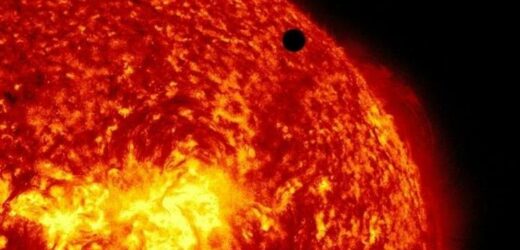NASA Solar Observatory captures solar flares in October
We use your sign-up to provide content in ways you’ve consented to and to improve our understanding of you. This may include adverts from us and 3rd parties based on our understanding. You can unsubscribe at any time. More info
The powerful solar flare is set to arrive today, on February 2, after a coronal mass ejection erupted in space on Saturday morning. The coronal mass ejection (CME), which is a powerful eruption near the surface of the sun caused by kinks in the solar magnetic field, occurred in the early hours on Saturday.
This resulted in shocks rippling through the solar system.
It’s now on a collision course with Earth and it is predicted to arrive in the early hours today, according to data from NASA’s Solar and Heliospheric Observatory.
However, experts have assured satellites and power grids are “in no danger”.
Astronomer Dr Tony Phillips has revealed the highly charged cloud of particles may result in sightings similar to the northern lights at higher latitudes.
READ MORE: Science breakthrough as satellite discovers ‘deformed’ planet


Writing on his website spaceweather.com, Dr Philips explained the CME could cause a G2-rated solar storm on Earth.
Solar storms are graded by their severity on a scale from one to five, with a G1 described as “minor” and a G5 as “extreme”.
Dr Phillps explained: “Moderately-strong G2-class geomagnetic storms are possible after the CME arrives.
“During such storms, auroras can spill out of the Arctic Circle into northern-tier US states from New York to Minnesota to Washington.
DON’T MISS
How to live longer: Two of the best diets to reduce age-related diseas [UPDATE]
Avatar: James Cameron ‘nailed phones to a wall if they rang on set’ [REVEAL]
Truss close to Brexit deal as UK to pump funds into EU project [INSIGHT]


“Power grids and satellites are in no danger, however.
“This is a low hazard ‘auroras only’ space weather event.”
While this may be a low threat storm, more extreme storms cause chaos on Earth’s magnetic field, disrupting technology around the globe.
NASA has said: “Harmful radiation from a flare cannot pass through Earth’s atmosphere to physically affect humans on the ground.
“However – when intense enough – they can disturb the atmosphere in the layer where GPS and communications signals travel.”
Source: Read Full Article


